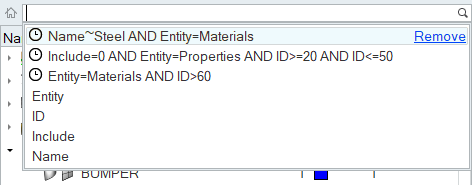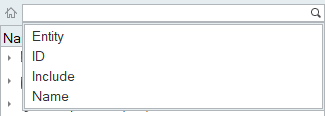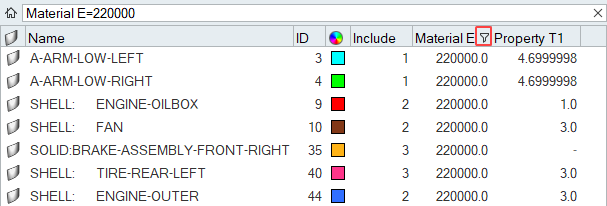Find and Search for Entities
The search bar can be used to find and filter entities in a browser.
Perform a Quick Search
Perform an Advanced Search Using Auto-Completion
Interactively build search strings using a dynamic suggestion list.
- Press the Down Arrow key to scroll thought the list of attributes, operators, or values.
- Press Tab or Enter to select the attributes, operators, or values
- Press Esc to dismiss the list of attributes, operators, or values.
- While searching for text with space or special characters, use quotes (“ ”).
- To search multiple values with a single attribute entry, use a coma after the first value selection without a space.
- Double-click on an attributes, operators, or values to invoke suggestion list.
Use Column Filters to Build a Search
Use column filters to quickly search any attribute that is added to a browser as a column.
Access Recent Search Strings

Clicking on a recent search string auto-applies the filter and shows the search string in the search bar.






